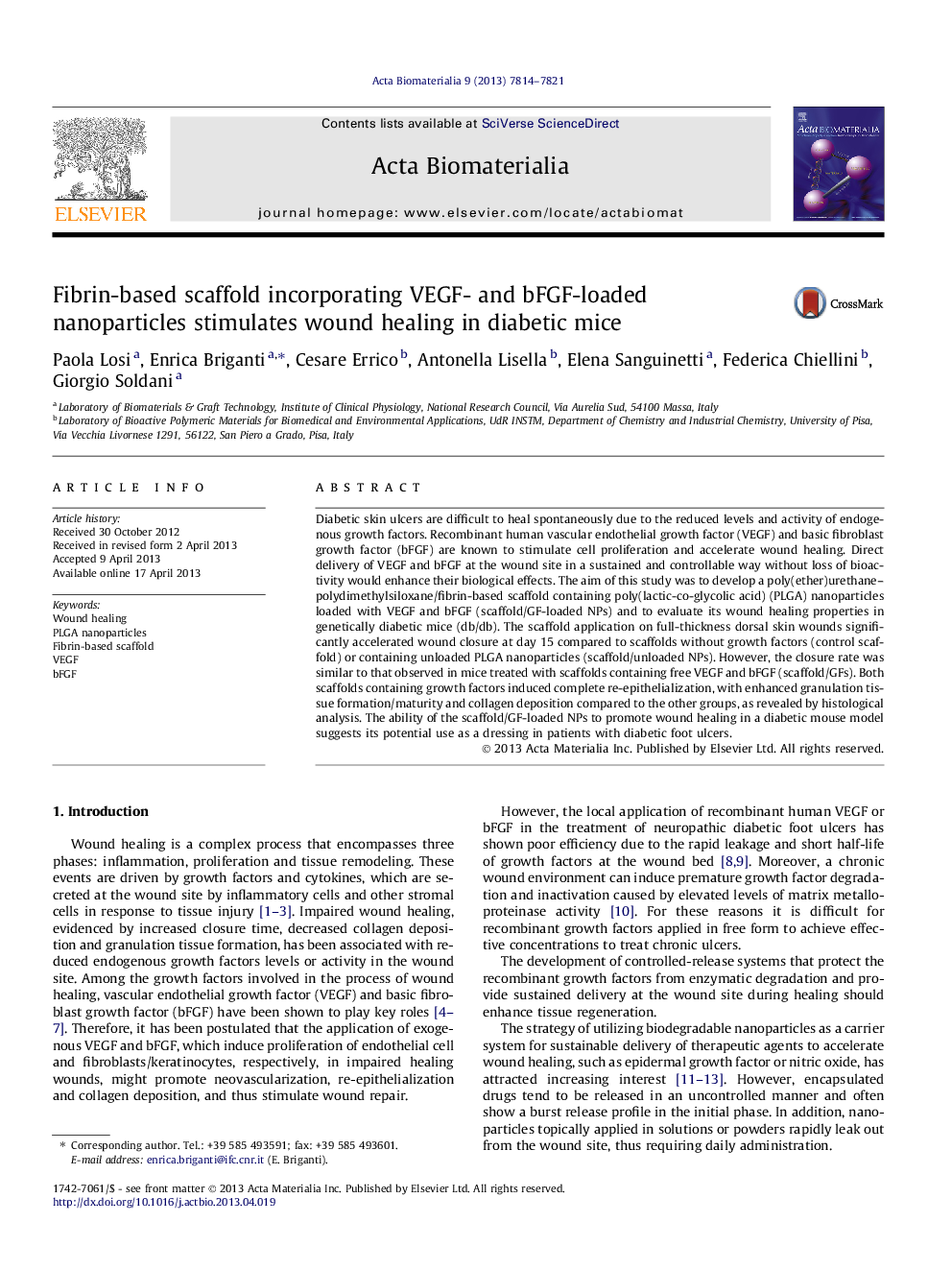| Article ID | Journal | Published Year | Pages | File Type |
|---|---|---|---|---|
| 10159613 | Acta Biomaterialia | 2013 | 8 Pages |
Abstract
Diabetic skin ulcers are difficult to heal spontaneously due to the reduced levels and activity of endogenous growth factors. Recombinant human vascular endothelial growth factor (VEGF) and basic fibroblast growth factor (bFGF) are known to stimulate cell proliferation and accelerate wound healing. Direct delivery of VEGF and bFGF at the wound site in a sustained and controllable way without loss of bioactivity would enhance their biological effects. The aim of this study was to develop a poly(ether)urethane-polydimethylsiloxane/fibrin-based scaffold containing poly(lactic-co-glycolic acid) (PLGA) nanoparticles loaded with VEGF and bFGF (scaffold/GF-loaded NPs) and to evaluate its wound healing properties in genetically diabetic mice (db/db). The scaffold application on full-thickness dorsal skin wounds significantly accelerated wound closure at day 15 compared to scaffolds without growth factors (control scaffold) or containing unloaded PLGA nanoparticles (scaffold/unloaded NPs). However, the closure rate was similar to that observed in mice treated with scaffolds containing free VEGF and bFGF (scaffold/GFs). Both scaffolds containing growth factors induced complete re-epithelialization, with enhanced granulation tissue formation/maturity and collagen deposition compared to the other groups, as revealed by histological analysis. The ability of the scaffold/GF-loaded NPs to promote wound healing in a diabetic mouse model suggests its potential use as a dressing in patients with diabetic foot ulcers.
Related Topics
Physical Sciences and Engineering
Chemical Engineering
Bioengineering
Authors
Paola Losi, Enrica Briganti, Cesare Errico, Antonella Lisella, Elena Sanguinetti, Federica Chiellini, Giorgio Soldani,
